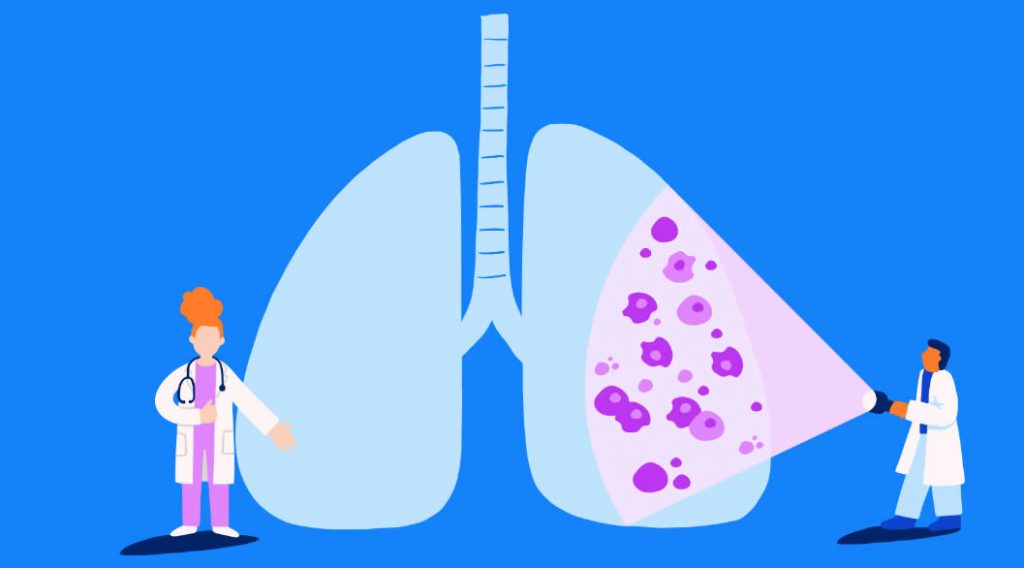Latest Breakthroughs in Non-Small Cell Lung Cancer NSCLC Treatment
Non-small cell lung cancer (NSCLC) has always been a challenge to treat, especially in its advanced stages. Traditional treatments like chemotherapy and radiation often result in significant side effects and limited survival benefits. However, in recent years, immunotherapy has emerged as a revolutionary approach, offering hope to patients with advanced or metastatic NSCLC.

Understanding Non-Small Cell Lung Cancer (NSCLC)
NSCLC accounts for approximately 85% of all lung cancer cases, making it the most prevalent form of lung cancer. It comprises several subtypes, including:
- Squamous cell carcinoma
- Adenocarcinoma
- Large cell carcinoma
Early detection of NSCLC is often difficult, as the disease may not present noticeable symptoms until it has progressed. Common symptoms include persistent coughing, chest pain, shortness of breath, weight loss, and in some cases, bone pain from metastasis. Advanced cases may also exhibit neurological symptoms due to brain metastasis.
Diagnosis typically involves a chest X-ray or CT scan, followed by a biopsy to determine the type and stage of the cancer. PET/CT scans and MRI may also be used to further evaluate the extent of the disease. The staging of NSCLC, which includes assessments of tumor size, lymph node involvement, and the presence of metastasis, plays a critical role in determining the prognosis and treatment approach.
Immunotherapy for NSCLC: A Game-Changer
Immunotherapy has opened up new avenues for NSCLC treatment. It works by targeting the mechanisms that allow cancer cells to evade detection by the immune system. Specifically, immune checkpoint inhibitors, such as PD-1 and PD-L1 inhibitors, help the body recognize and attack cancer cells.
Key Considerations in Immunotherapy for NSCLC
- Patient Eligibility: Not all patients are candidates for immunotherapy. Eligibility depends on factors like tumor type, biomarker status (such as PD-L1 expression), and overall health.
- Combination Therapy: Immunotherapy can be combined with chemotherapy or targeted therapies. While this approach may increase efficacy in some patients, it also raises the risk of side effects.
- Monitoring: Regular follow-up is crucial for patients on immunotherapy. Monitoring includes routine scans, blood tests, and managing any emerging symptoms.
- Side Effects: Immunotherapy is generally well-tolerated, but immune-related side effects affecting various organs may occur. It is important for patients to stay informed about potential risks and report any unusual symptoms.
Advantages of Immunotherapy over Traditional Treatments
Immunotherapy presents several benefits when compared to traditional treatments like chemotherapy and radiation. These include:
- Better Response Rates: Patients who do not respond to chemotherapy may see improvements with immunotherapy.
- Extended Survival: Immunotherapy has been shown to significantly improve long-term survival in some NSCLC patients.
- Improved Quality of Life: Immunotherapy typically has fewer and less severe side effects, leading to a better quality of life compared to chemotherapy.
Case Study: Tecentriq (Atezolizumab) in NSCLC Treatment
Tecentriq (atezolizumab), a PD-L1 inhibitor, has been a key player in the treatment of advanced NSCLC since its FDA approval in 2016. It is used in both first-line and second-line treatments, either as a monotherapy or in combination with chemotherapy. The primary goal of atezolizumab is to block the pathways that cancer cells use to evade immune surveillance, thereby boosting the body’s natural anti-tumor response.
Key Features of Atezolizumab (Tecentriq)
- Indications: Tecentriq is approved for patients with metastatic NSCLC who express PD-L1 at levels of 50% or higher and have not received prior chemotherapy. It is also used for patients who have failed platinum-based chemotherapy.
- Clinical Benefits: Studies show that Tecentriq improves both progression-free survival and overall survival in NSCLC patients. It also enhances the objective response rate in second-line treatments.
- Side Effects: Common side effects include fatigue, nausea, rash, and decreased appetite. Some patients may experience immune-related adverse events, which require careful monitoring.
Table: Top 10 Immunotherapy Options for NSCLC in the U.S. (2024)
| Therapy | Mechanism | Region | Features |
|---|---|---|---|
| Tecentriq (Atezolizumab) | PD-L1 Inhibitor | Nationwide | First/second-line treatment for NSCLC |
| Keytruda (Pembrolizumab) | PD-1 Inhibitor | Nationwide | Shown to improve survival rates |
| Opdivo (Nivolumab) | PD-1 Inhibitor | Nationwide | Effective in advanced stages |
| Yervoy (Ipilimumab) | CTLA-4 Inhibitor | Nationwide | Used in combination with Opdivo |
| Imfinzi (Durvalumab) | PD-L1 Inhibitor | Nationwide | Used post-chemoradiotherapy in NSCLC |
| Libtayo (Cemiplimab) | PD-1 Inhibitor | Nationwide | Improves outcomes in metastatic NSCLC |
| Tremelimumab | CTLA-4 Inhibitor | Limited U.S. regions | Experimental combination therapy |
| Toripalimab | PD-1 Inhibitor | California, Texas | New in U.S. trials with promising results |
| Camrelizumab | PD-1 Inhibitor | Midwest | Available in combination with chemotherapy |
| Sintilimab | PD-1 Inhibitor | East Coast | Emerging therapy for advanced NSCLC |
Q&A: Common Concerns About NSCLC Immunotherapy
Q: Is immunotherapy suitable for all NSCLC patients?
A: No, immunotherapy is not suitable for all patients. Biomarker testing (such as PD-L1 expression) and overall health are key factors in determining eligibility.
Q: Can immunotherapy be combined with other treatments?
A: Yes, immunotherapy can be used in combination with chemotherapy or targeted therapies. However, this may increase the risk of side effects.
Q: What are the common side effects of immunotherapy?
A: The most common side effects include fatigue, rash, and gastrointestinal issues. Some patients may experience immune-related side effects affecting organs like the lungs, liver, or thyroid.
Conclusion
Immunotherapy has revolutionized the treatment landscape for non-small cell lung cancer. By enhancing the body’s natural defenses, it offers a more targeted approach with better outcomes for many patients, particularly those with advanced disease. Tecentriq and other immunotherapy drugs continue to offer new hope to NSCLC patients, extending survival and improving quality of life. As research progresses, the potential for immunotherapy in cancer treatment will only continue to expand.
References:







Recent Comments